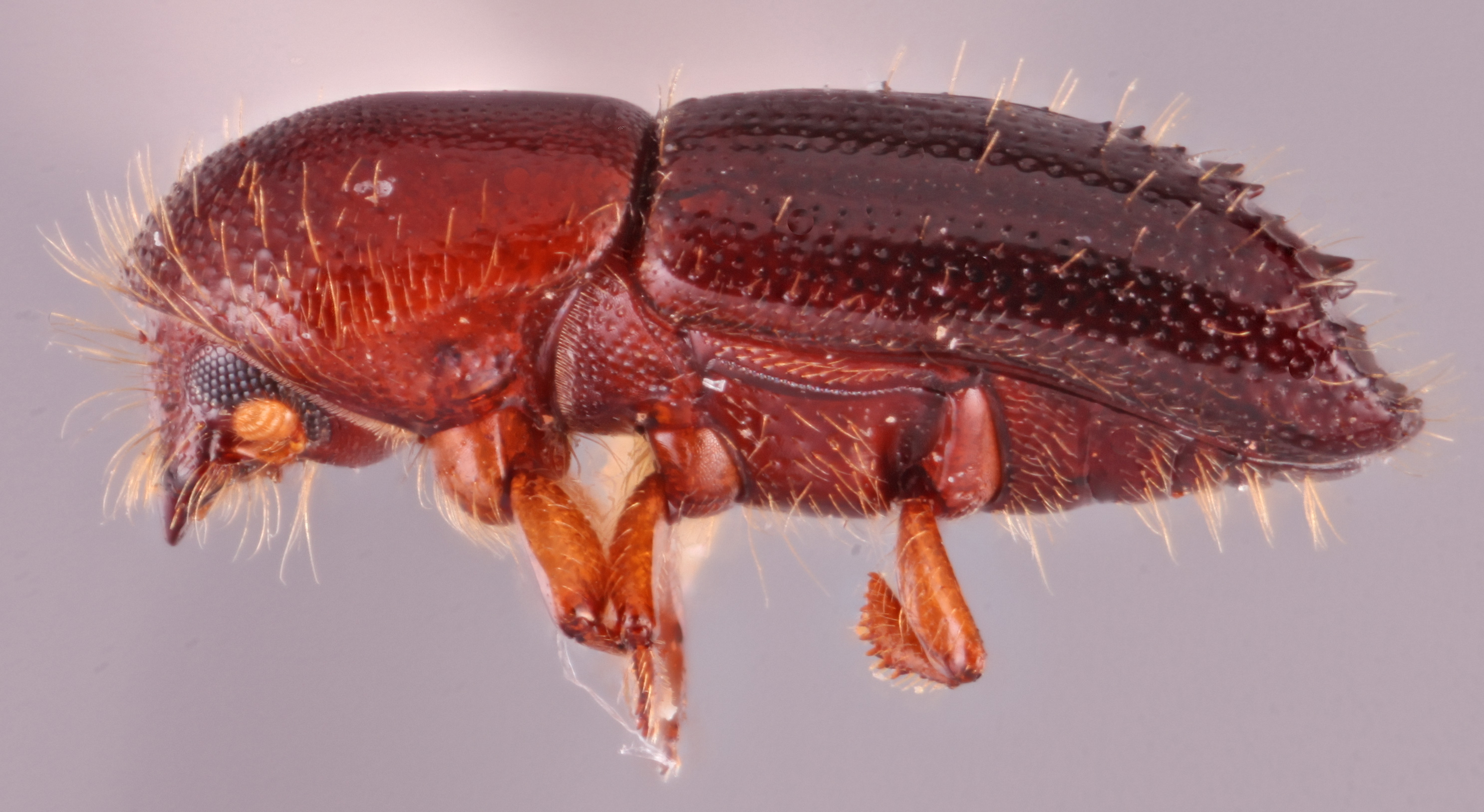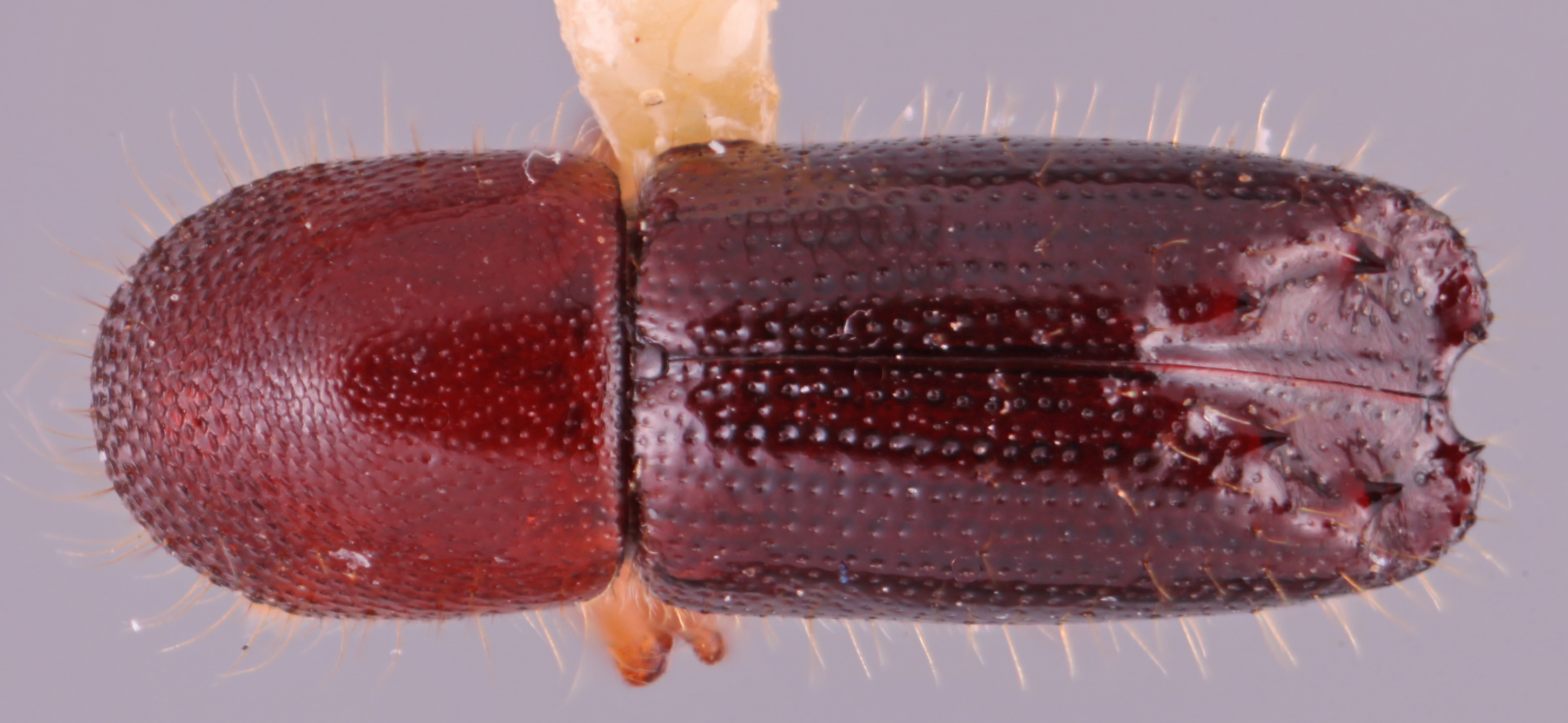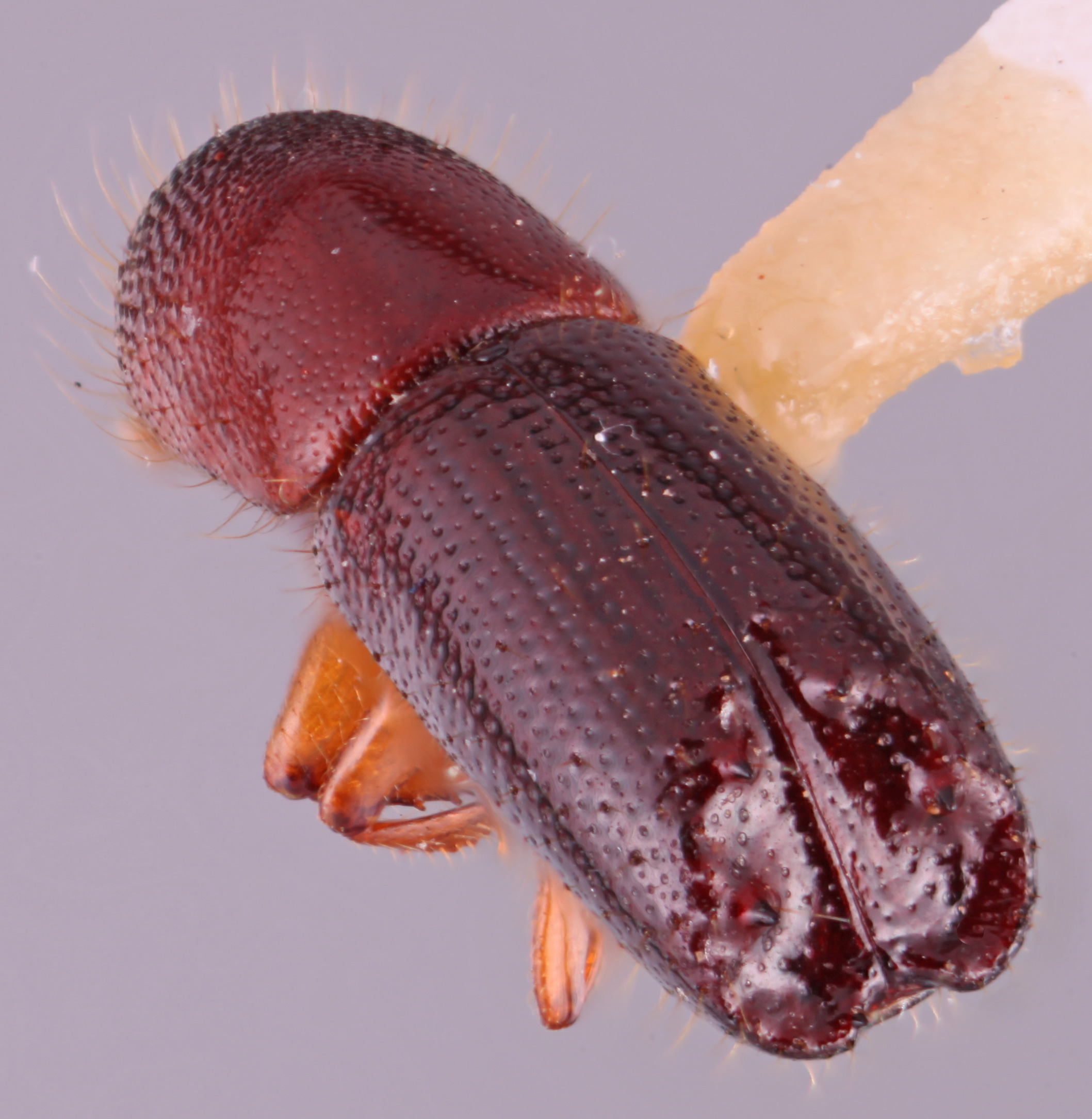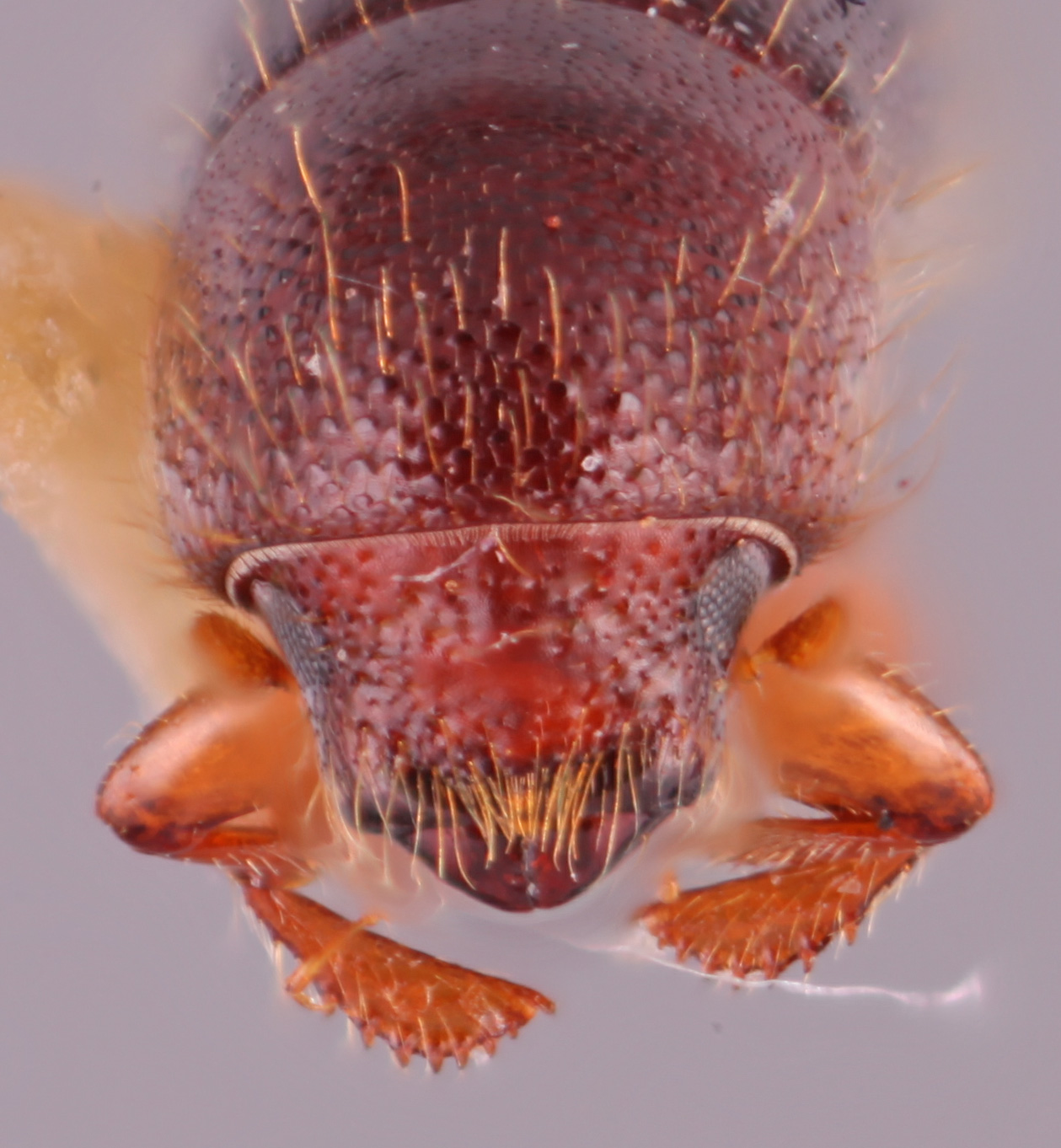Debus emarginatus
|
Debus emarginatus lateral; S.M. Smith |
|
Debus emarginatus dorsal; S.M. Smith |
|
Debus emarginatus declivity; S.M. Smith |
|
Debus emarginatus frontal; S.M. Smith |
Taxonomic history
Xyleborus emarginatus Eichhoff, 1878a: 392.
Debus emarginatus (Eichhoff): Hulcr and Cognato, 2010a: 14.
Synonyms
Xyleborus exesus Blandford, 1894b: 119. Hulcr 2010: 111.
Ips cinchonae Veen, 1897: 135. Kalshoven 1959a: 96.
Xyleborus cordatus Hagedorn, 1910a: 12. Schedl 1942c: 6.
Xyleborus palmeri Hopkins, 1915a: 54. Hulcr 2010: 111.
Xyleborus terminaliae Hopkins, 1915a: 54. Hulcr 2010: 110.
Xyleborus emarginatus semicircularis Schedl, 1973: 92. Wood 1989: 176.
Diagnosis
3.3−3.6 mm long (mean = 3.48 mm; n = 4); 2.83−3.0 times as long as wide. This species is distinguished by the posterolateralposterolateral:
relating to end of the side part/portion
 extensions of elytraelytron:
extensions of elytraelytron:
the two sclerotized forewings of beetles that protect and cover the flight wings
short, less than the width of apicalapex:
point or edge furthest from the body; opposite of base
 emargination; declivitydeclivity:
emargination; declivitydeclivity:
downward slope of either the pronotum or elytra
 shallowly excavatedexcavated:
shallowly excavatedexcavated:
with a depression that is not in a segment of a circle
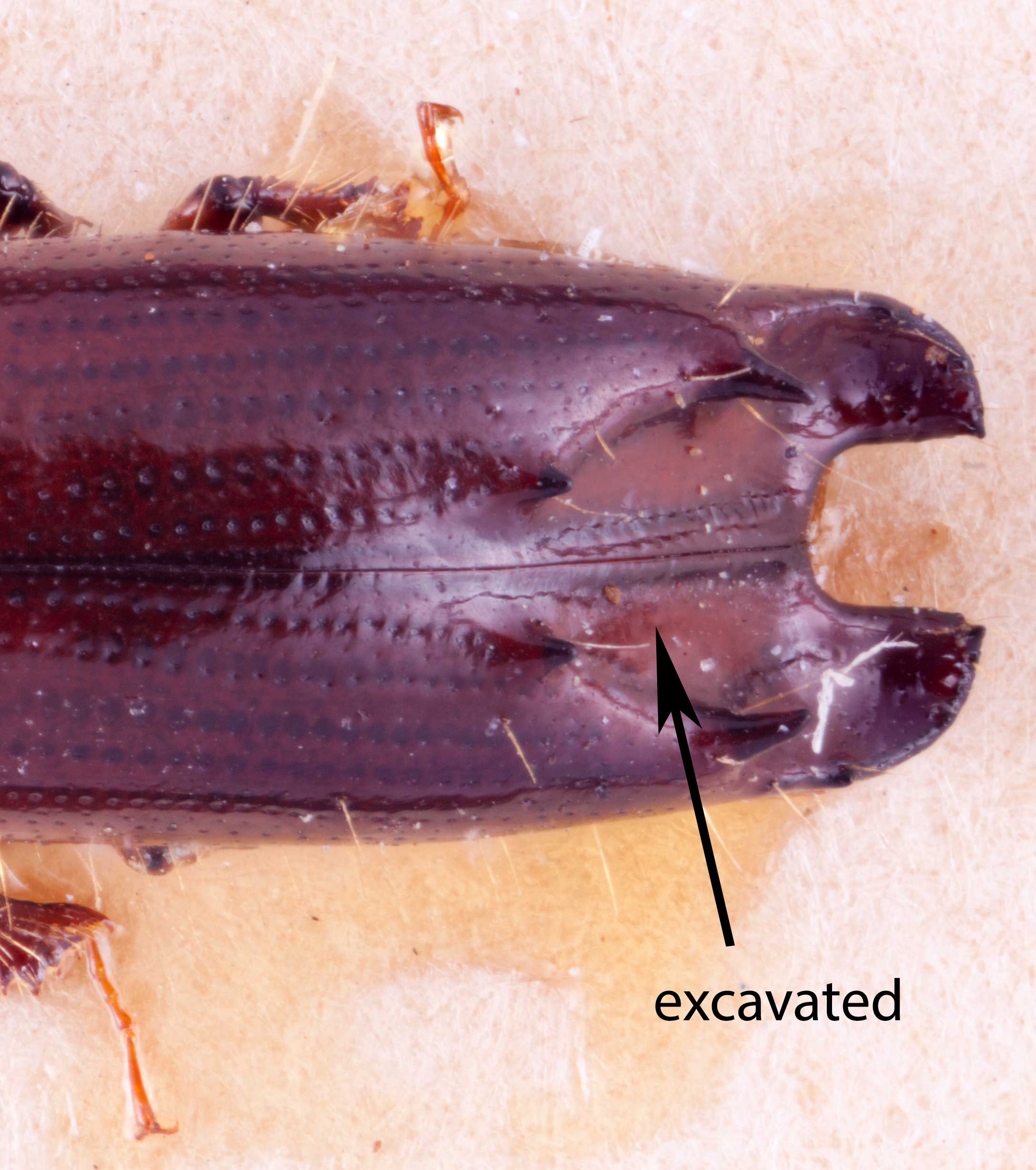 ; and elytralelytral:
; and elytralelytral:
pertaining to the elytra
declivitydeclivity:
downward slope of either the pronotum or elytra
 clearly, confusedly punctatepunctate:
clearly, confusedly punctatepunctate:
set with fine impressed points, appearing as pin pricks
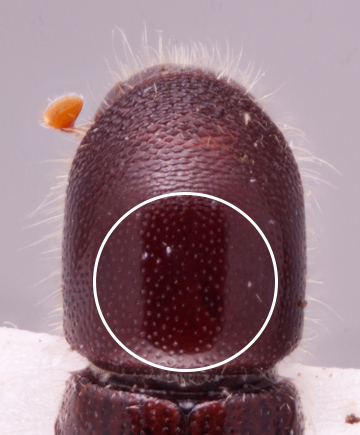 .
.
This species is very similar to D. shoreae and can be distinguished by the puncturation of the elytralelytral:
pertaining to the elytra
declivitydeclivity:
downward slope of either the pronotum or elytra
 .
.
May be confused with
Debus defensus, D. quadrispinus and D. shoreae
Distribution
from India and southern China through southeast Asia, the Philippines and Indonesia to New Guinea and the Solomon Islands in the East, northwards to Japan; recorded in the study region from China (Fujian, Guangxi, Guizhou, Hubei, Hunan, Shaanxi, Shanxi, Sichuan, Xizang, Yunnan), India (Nicobar Is), Laos, Taiwan, Thailand, Vietnam
Host plants
strongly polyphagous (e.g. Browne 1961bBrowne 1961b:
Browne FG. 1961b. The biology of Malayan Scolytidae and Platypodidae. Malayan Forest Records 22: 1-255., Ohno 1990Ohno 1990:
Ohno S. 1990. The Scolytidae and Platypodidae (Coleoptera) from Borneo found in logs at Nagoya port 1. Research Bulletin of the Plant Protection Service, Japan 26: 83-94., Wood and Bright 1992Wood and Bright 1992:
Wood SL, Bright DE. 1992. A catalog of Scolytidae and Platypodidae (Coleoptera), Part 2: Taxonomic index. The Great Basin Naturalist Memoirs 13: 1-1533.)
DNA data
Sequences available for COI and CAD.

